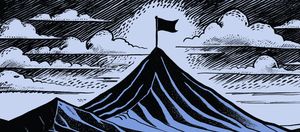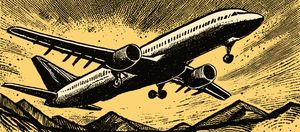Noah is the COO at Palo Alto Software, makers of the online business plan app LivePlan. He started his career at Yahoo! and then helped start the user review site Epinions.com. From there he started a software distribution business in the UK before coming to Palo Alto Software to run the marketing and product teams.
The Importance of Burn Rate and Cash Runway
6 min. read
Updated October 29, 2023
It doesn’t matter if times are good or bad, cash is always the lifeblood of any business. You need cash in the bank to operate, to pay employees, and to keep the doors open. If you’re out of cash, you’re out of business.
In times of crisis and uncertainty, understanding your cash position is even more important. If you’re running a startup or small business in these times, you have to be thinking about a Plan B and even a Plan C. As I write this, at least 20% of the United States is on lockdown and only “essential” businesses have their doors open. The question of “what happens to my business?” is on every business owner’s mind.
To help answer that question and provide you with a plan of action, you need to review and revise your financials. This can be a daunting task, but the best place to start is understanding and calculating your cash burn rate and your cash runway.
How do you calculate the burn rate?
Your cash burn rate is calculated by subtracting the amount of cash that you spend in a month from the amount of cash that you bring in during that same month.
To figure this out, start with how much cash you are spending each month. You probably have fixed expenses such as rent and utilities that you have to pay every month. You’ll also have variable expenses such as salaries, travel, supplies, and other services you use to run your business. This total number is your Gross Burn Rate.
Gross burn rate = (Total variable expenses + Total fixed expenses)
Next, you need to look at how much cash you are bringing in each month. This is different from what you may bill in a given month. Just because you invoiced someone doesn’t mean that they’re going to pay. Until you have cash in hand, any outstanding invoices would fall under accounts receivable. Instead, look at how much cash you actually receive.
Now, subtract your Gross Burn Rate from your cash received. This is your Net Burn Rate (but it’s typically just referred to as Burn Rate). If you’re bringing in more cash than you’re spending, congratulations! You have positive cash flow. If the number is negative, you have negative cash flow and the number is how much cash you are “burning” each month.
Burn Rate = Cash Received – Cash Paid Out
Another, faster, way to calculate your burn rate is to look at your accounting system or even your bank account and compare the cash balance from the beginning of the month to the cash balance from the end of the month. The difference between the two numbers is your cash burn rate.
How do you calculate cash runway?
Cash runway is simply a calculation of how long your cash is going to last you if you are “burning” cash.
You calculate your cash runway by looking at your bank account and figuring out how much cash you have on hand. Divide that number by your cash burn rate and you will have a prediction of how long your business has to survive if you don’t make any changes.
Cash Runway = Cash Balance ÷ Burn Rate
A normal pattern is to get some funding and use that cash to build the business. While you build the business, you are probably spending more than you’re making and the goal is to reduce your cash burn rate to zero and become cash-flow positive before you run out of money.
Brought to you by
Create a professional business plan
Using AI and step-by-step instructions
Create Your PlanSecure funding
Validate ideas
Build a strategy
How to handle cash flow in a crisis
In normal times, you can have fairly straight forward expectations about how business is going to work and how customers are going to behave. But, in uncertain times, you have to throw those expectations out the window.
This is where forecasting and budgeting are crucial for the survival of your business. You’ll need to create multiple sales forecasts and expense budgets to explore different scenarios. If the downturn is short-lived, what expenses do you cut to extend your cash runway? If the downturn is going to be extended, you may need to reconfigure your business and explore different business models.
Thinking about recovery is also important. You’ll want to explore different financial scenarios for a fast recovery compared to a slow recovery. Depending on your industry, things may play out very differently.
Working out different financial scenarios can sound complicated, but it doesn’t have to be. If you don’t have a budget and forecast, start with our sales forecast template (we have one for subscription businesses, too) and our profit and loss template.
There are more automated solutions too that can help you avoid the pain of complex spreadsheets. I’m partial to using LivePlan for budgeting and forecasting because it lets me quickly create different scenarios and immediately see the impact on my cash. It even lets me see what might happen to my cash if my customers start to pay slower than they normally do.
Tips for reducing your cash burn rate
Once you’ve established the current state of your burn rate and the amount of runway you have left, it’s time to find ways to reduce it. Here are a few tips to consider:
- Grow your revenue: This is probably the most obvious and perhaps least likely option, but maybe you can pivot your business, discover a new business model and figure this out.
- Cut your payroll: This is of course always painful and hopefully, you can look to cut other expenses first.
- Reduce or cut expenses: Can you trim marketing expenses? Take a close look at your budget and cut anywhere you can.
- Negotiate lower costs: Talking to your vendors is always a good idea. They’d rather keep you as a customer than lose you entirely and will often offer discounts.
- Sell excess inventory: If you can sell any extra inventory to another company, that can generate cash for your business.
- Encourage cash sales: If you can get more customers to pay in cash vs invoicing them, you’ll end up with more cash on hand, faster.
- Delay paying your bills: Slowing down bill payments is never ideal, but it can put you in a better cash position temporarily.
Burn rate adjustments now will have long-term benefits
Reducing your cash burn rate is never a fun experience, but it is critical to do especially when your business is faced with tough times.
Remember, there is always another side to the tough times. Every recession and downturn eventually lead to periods of growth. So, if you can reduce your burn rate and extend your runway you will position your business well to bounce back when the economic situation improves.
The important part is to mitigate the loss and position your business to take advantage of the inevitable growth, even if you’re still uncertain of when that will occur. If you’re still struggling to reduce your burn rate, there are other options available to help extend your runway.
Brought to you by
Create a professional business plan
Using AI and step-by-step instructions
Create Your PlanSecure funding
Validate ideas
Build a strategy








